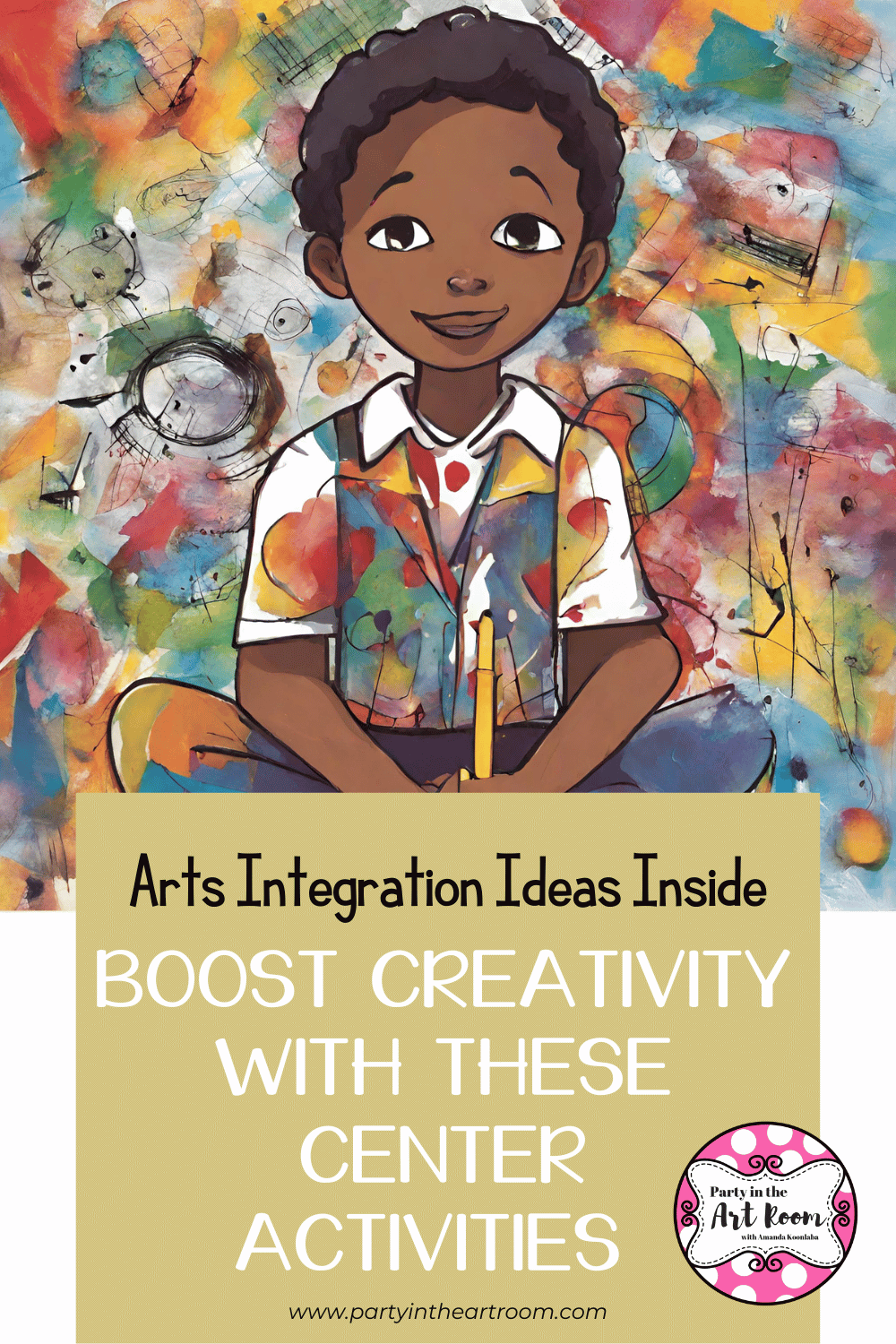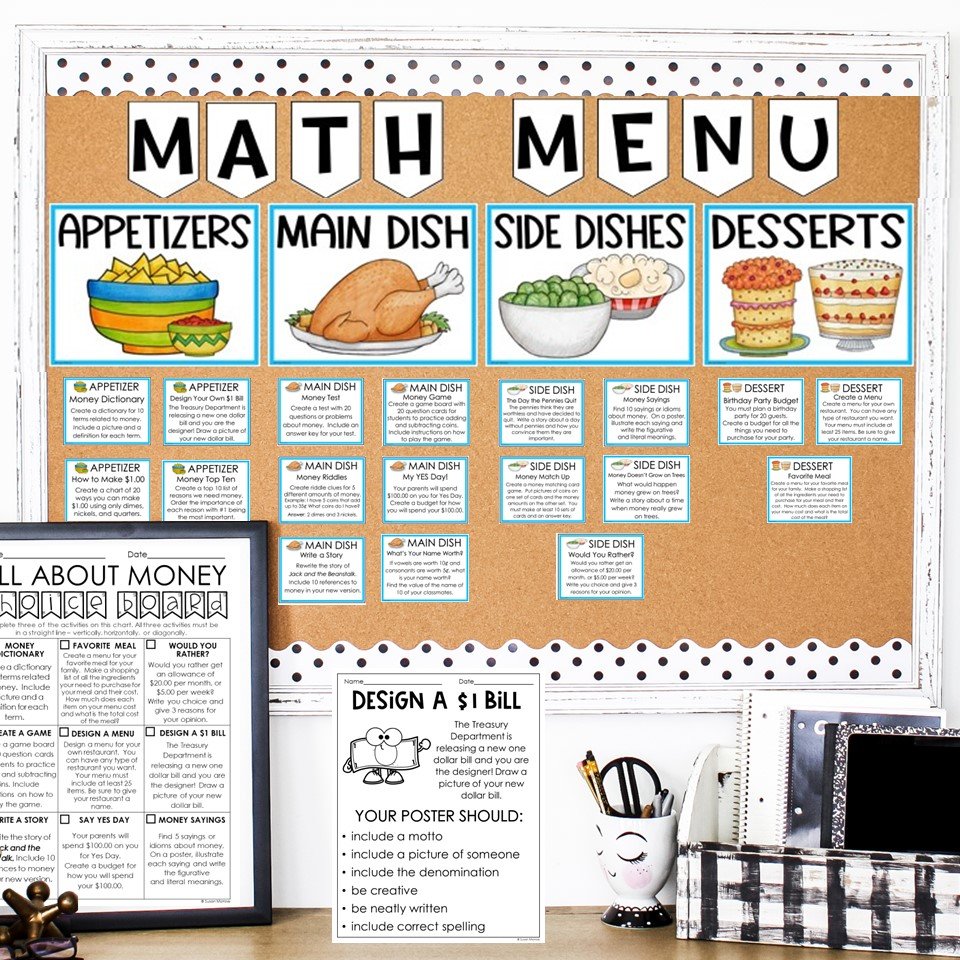Boost Creativity with these 7 Center Activities: Arts Integration Ideas Inside
Ever found yourself wondering about how arts integration can boost creativity in the classroom?
Well, you're in for a treat! This post is crafted for every creative teacher out there – whether you're an art teacher weaving connections into general ed classrooms or a gen ed teacher on the lookout for fresh ways to teach your content through art. I've got something special for each of you!
Get ready to explore these 7 Center Activities, and for each resource, I'll share a practical arts-integrated tip to spice up your teaching game.
Ready to make your classroom a hub of creativity? Let's do this!
Project Based Learning as Arts Integration
Giving students Voice and Choice is an important element in project based learning. Sandy from Sweet Integrations says students take more ownership in their learning when they are given opportunities to connect with their areas of interest such as art. It's also important for teachers to not only give students opportunities for choice, but still have control of the academic content and learning experience. In her post, she'll give you helpful ideas in Giving Students Voice and Choice During Project Based Learning. By collaborating with art teachers, art activities can easily be infused into the project and students can express their creativity. An example of using design elements for brochures, posters, infographics, and final products is using Canva.
Arts Integration Tip: Let students take the lead by picking their favorite art media, genres, styles, and more from a choice board—it's their ticket to a personalized and super creative project experience.
Art and Writing for Creativity
Connecting art and writing is always a win with students, and Carla from Comprehension Connection loves doing just that. In her post, Becoming a Memoir Writing Pro with the Simple Steps, students learn about memoirs and once completed, you might help students create silhouettes to go with them. Another type of project she's done is book making. Students love creating their own books, and with her paper bag book projects, students also work on important comprehension skills as well. You can learn more about them her post, How to Effectively Use Paper Bag Books to Build Comprehension Skills. They are great for centers or small group, and they work well for test prep review too.
Arts Integration Tip: Spice up the silhouettes by prompting students to think about the elements of art while creating. Line and shape are great elements to focus on for creating silhouettes.
Read-Alouds for Creative Discussion
Giving students a creative outlet is a great way to increase engagement during center time. Janet of Fishyrobb shows how drawing is an important element in her writing centers in her post How To Teach Informational Writing in 3rd and 4th Grade. Using Time For Kids as a model, her students design their own informational magazines on a topic of their choice. Illustrating their work is an important aspect of this project that lets them relay information in a creative way.
Art Integration Tip: Give students time to practice their drawings and encourage them to focus on proportion as they work. They can also apply what they know about line, shape, color, and texture to the types of drawing mentioned in Fishyrobb’s post.
Creative Opportunities for Arts Integration in Math
Contrary to popular belief, math is not just a realm of numbers and rigid formulas. It's a subject filled with opportunities for creative exploration and innovative thinking. Research in educational psychology suggests that creativity is as crucial in learning mathematics as it is in the arts. Math can be a playground for creativity, a domain where imagination and numbers coexist. Susan from Keep 'em Thinking loves infusing creative thinking into the math classroom. Her blog post, Math Menus: 4 Powerful Ways to Marry Creativity and Math, provides examples of how these menus can offer students a variety of engaging and creative activities, ranging from designing games to creative storytelling with numbers. The post gives tips on implementing math menus, addresses potential challenges, and showcases the impact of integrating creativity in math lessons.
Creative Passion Projects
Celebrating the end of state testing is on every upper elementary teacher's and student's mind year after year. Amy of Amazing Materials for You is here with an idea for an art passion project which connects creative expression, discussion, social studies, and more in her blog post, 4 Fantastic Ways to Celebrate Learning through an Art Passion Project, she shares ideas for keeping your upper elementary students excited, engaged, and learning beyond state testing.
Personal Narratives
Art and writing are all about creativity and risk-taking. Kady from Teacher Trap has students access their creative side with personal narrative storytelling and book creation. Even reluctant writers can tap into their inner authors and find success in writing with the proper supports. In Simple Tools for Teaching Personal Narrative Writing in the Elementary Grades, Kady shares how to incorporate hands-on story planning, illustrations, and graphic organizers to motivate young writers and foster creativity.
Artful Literacy Centers
Looking for more arts integration to spice up your teaching? Step into the vibrant universe of literacy centers with a unique twist! Ever wondered about the difference between traditional hands-on literacy centers and the enchanting realm of Artful Literacy Centers™ by Party in the Art Room? Discover how these centers, emphasizing critical thinking and creativity, can revolutionize your students' engagement and literacy skills. Eager to embark on a journey of meaningful learning through the arts? Learn more about Artful Literacy Centers™ here.
Conclusion
In conclusion, fostering creativity in the classroom is not just an aspiration; it's an attainable goal through purposeful arts integration. These seven center activities serve as dynamic tools for teachers of all subjects to integrate the arts into any content area. As we've explored each activity, envision the kaleidoscope of possibilities they offer for engaging learners, enhancing critical thinking, and promoting real-world application of skills.
And, remember, the art room is not confined to four walls but can permeate every subject and grade level.
I’m Amanda, and I align standards and integrate content to help teachers meet the needs of the Whole Child in art class! I have yet to find a standard that I couldn’t teach through art, and I want to share it all with you.
Not sure where to start with bringing art and content together? This freebie guide is packed with 25 ideas to align your art lessons with math and ELA standards. Your students will be crafting art and practicing algebraic thinking. Win-win!
I want all students to feel successful in the art room, so I created a standards-based Daffodil Collage lesson to do just that! The lesson includes an artist study, student reflection, and more, so push your artists to their full potential.
Follow along on my Instagram page for more tips on teaching the Whole Child in the art room!
Connecting art and content together doesn’t have to be mind-boggling. I’ve made it simple with 25 math and ELA art lesson starters - for free! Plus, I included 15 worksheets for students to reflect on their art-making journey.










